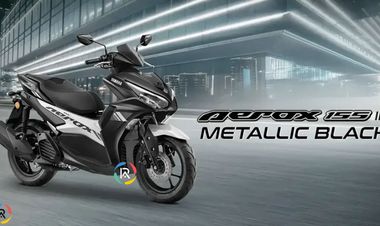Emission norms in India- an Outlook
Under the BS VI standards, Nox levels to be reduced 25% for petrol and 68% for diesel and the latter would have a reduction of 82% of PM.
981 views | Date: May 17, 2023
With the world tackling against the phenomenal outcome of the climate change, vehicular emissions through transportation means contribute 28% to the greenhouse emissions. Countries at global level are undertaking measures to reduce the pollutants caused by combustion of petrol and diesel. With respect to India, the county has adopted the Bharat Emission Standards that regulates the emissions of harmful pollutants responsible for Greenhouse gas emissions.
Major Pollutants
Combustion of petrol and diesel lead to production of notorious gases such as Carbon dioxide (CO2), Carbon Monoxide (CO), different oxides of Nitrogen (Nox), Hydrocarbons (HC), carbon soot or Particulate Matter (PM) which would be released.
Bharat stage Emission Standards
The Bharat stage emission standards are the emission standards similar to the EURO standards, instituted by the Government of India to control emissions from internal combustion engines. This was first rolled out in the year 2000 as India 2000.
|
Standard |
Reference |
In effect from |
Region |
|
India 2000 |
Euro 1 |
2000 |
Nationwide |
|
Bharat Stage II |
Euro 2 |
2001 |
National Capital Region or NCR (encompasses Delhi and the surrounding urban cities), Mumbai, Kolkata, Chennai |
|
2003 |
NCR, 10 cities |
||
|
2005 |
Nationwide |
||
|
Bharat Stage III |
Euro 3 |
2005 |
NCR, 10* cities |
|
2010 |
Nationwide |
||
|
Bharat Stage IV |
Euro 4 |
2014 |
30+ cities and other places BS III |
|
2017 |
Nationwide |
||
|
Bharat Stage VI |
Euro 6 |
2020 |
Nationwide |
|
Bharat Stage VI (Phase 2) |
Euro 6 |
2023 |
Nationwide |
India 2000 Norms
|
Pollutants |
Petrol Vehicles |
Two-wheelers |
Diesel Vehicles |
|
Carbon Monoxide (g/km) |
2.72-6.90 |
2 |
2.72–6.90 |
|
HC (g/km) |
- |
- |
- |
|
NOx (g/km) |
- |
- |
- |
|
PM |
- |
- |
0.14-0.25 |
|
HC+NOx (g/km) |
0.97-1.70 |
2 |
0.97-1.70 |
BS II Norms
|
Pollutant |
Petrol Vehicles |
Two-wheelers |
Diesel Vehicles |
|
Carbon Monoxide (g/km) |
2.2-5.0 |
1.5 |
1.0–1.5 |
|
HC (g/km) |
- |
- |
- |
|
NOx (g/km) |
- |
- |
- |
|
PM |
- |
- |
0.08-0.17 |
|
HC+NOx (g/km) |
0.5-0.7 |
1.5 |
0.7–1.2 |
BS III Norms
|
Pollutant |
Petrol Vehicles |
Two-wheelers |
Diesel Vehicles |
|
Carbon Monoxide (g/km) |
2.3 |
1 |
0.64 |
|
HC (g/km) |
0.2 |
- |
- |
|
NOx (g/km) |
0.15 |
- |
0.5 |
|
PM |
0.05 |
- |
0.05 |
|
HC+NOx (g/km) |
0.35 |
1 |
0.56 |
BS IV Norms
|
Pollutant |
Petrol Vehicles |
Two-wheelers |
Diesel Vehicles |
|
Carbon Monoxide (g/km) |
1 |
1.97 |
0.5 |
|
HC (g/km) |
0.1 |
- |
- |
|
NOx (g/km) |
0.08 |
0.39 |
0.25 |
|
PM |
- |
- |
- |
|
HC+NOx (g/km) |
- |
0.20 - 0.79 |
0.025 |
BS VI Norms
|
Pollutant |
Petrol Vehicles |
Two-wheelers |
Diesel Vehicles |
|
Carbon Monoxide (g/km) |
1 |
1 |
0.5 |
|
HC (g/km) |
0.1 |
0.1 |
- |
|
NOx (g/km) |
0.06 |
0.06 |
0.08 |
|
PM |
0.0045 |
0.0045 |
0.0045 |
|
HC+NOx (g/km) |
- |
0.068 |
0.17 |
Emissions Lowering- BS VI
Under the BS VI standards, Nox levels to be reduced 25% for petrol and 68% for diesel and the latter would have a reduction of 82% of PM.
Impact of regulating Emission standards
Though this would reduce the emission levels of harmful particles, the performance of the vehicle and its fuel efficiency would be hit. Which means the combustion process of a regulated engine is lower comparatively to its predecessor variant. Even this increases the back pressure of the engine which poses a threat to the lifetime of an engine.
Cost wise variation
The latest BS VI vehicles are more in cost compared to their predecessor variants where a petrol variant of the car hikes price upto INR 20,000 but a diesel variant would shoot in an increase between INR 80,000 to 100,000.
Leave a Response
You must be logged in to respond.
Responses
No responses yet. Be the first!






